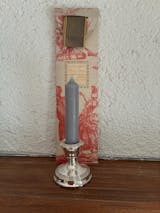
International Silver Hallmarks
International silver hallmarks are a set of marks that are stamped onto pieces of silver to indicate their quality, origin and age. These hallmarks have been used for centuries by various countries and regions to ensure that silver objects are accurately identified and valued. Hallmarks help prevent fraud and protect customers and additionally provide valuable information about pieces.
The history of silver hallmarks goes back to the 14th century when the first hallmarking system was introduced in France. Other countries soon followed suit, including England, Scotland, Germany and Austria.
Over time these systems evolved and became more complex, incorporating additional marks to indicate the year of manufacture, the silversmith's mark and the assay office where the piece was tested and marked. These marks can be very useful for collectors and historians who are trying to identify and date antique silver items.
One of the most widely used international silver hallmarks is the "925" mark which indicates that the piece is made of Sterling Silver. Sterling Silver is an alloy of 92.5% pure silver and 7.5% other metals, typically copper. Silver is relatively soft so it needs the addition of another metal to make it stable and solid enough to use. This alloy is commonly used in jewellery, flatware and other decorative objects.
Other countries may have their own standards for silver purity, such as the "800" mark used in Germany, which indicates a silver content of 80%.
One of the challenges of interpreting international silver hallmarks is that the marks often vary from country to country. For example, in the United States silver objects may have a maker's mark, a quality mark (such as "Sterling"), and a patent or trademark mark, but there is no official government assay mark. In contrast, in the United Kingdom silver objects must be tested and marked at a government approved assay office which use a specific set of marks to indicate the purity, date, and origin of the silver.
Next time you pick up an item made of silver take a look at the hallmarks on it; you can find out so much about its history.









